In 1947, the art historian Kurt Weitzmann published his seminal text on Byzantine manuscript illustration entitled, Illustrations in Roll and Codex: a Study of the Origin and Method of Text Illustration. His text postulated and explored a fundamental shift in pictorial logic with the advent of the codex in the early Byzantine period.
As demonstrated by his reconstruction of a roll of the Odyssey from the Third Century BCE, Weitzmann concluded in his analysis that early codex illustrations originally adopted the in-line, ‘freize-like’ logic of the roll. He reconstructed the archetype of the Vienna Genesis as a witness to this change given that he perceived the extant copy as bearing vestiges of the previous scroll-based system of illustrations. Weitzmann’s conclusions and postulated models have been disproven by art historians repeatedly, particularly given his romantic philological approach that postulated lost archetypes for known typologies. However, Weitzmann’s work implicitly acknowledged that a radical rupture in production and visuality had occurred with the advent of the codex. His methodological attempt to bridge the roll and the codex itself bears testament to a desire for and respect of the change in medium that affects the production of images and also their reception, interaction, and conception within and as part of a text.
A similar shift becomes evident with the advent of smart phones and touchscreen tablets, such as the iPad, whose software design demonstrates a conflict between the book as a typological medium based on horizontal swiping versus the webpage’s vertical scroll.
For example, when accessing a PDF online on the iPad, via Safari, the PDF adheres to the scroll-based logic of the webpage. Here the individual pages of the PDF progress vertically up the screen.
However, when downloaded into iBooks, the PDF can only be viewed page-by-page and scrolled through horizontally as one would a book. Nevertheless, one does not necessarily “scroll” or swipe through a book per se. The experience of a physical book engages a complex variety of sensual experiences as one touches and lifts the page, hearing the crinkling of the sheet and seeing the play of light on it as it makes its 180 degree rotation in space. Therefore, the iBook app experience is highly stylized, yet nevertheless acknowledges the horizontality of the reading experience.
After all, the iBook app homepage, if we can even call it that, is presented as a varnished wooden bookshelf, replete with texture and knots in the wood. One scrolls down the bookshelf just as one would roll one’s eyes down a bookshelf.
When reading an actual “book,” purchased through iTunes, the conflation of the digital and the codex experience becomes most pronounced as the iBook is replete with a cover, which peeks out past the margins of the pages, and these virtual pages animatedly fold across rather than just swiping past the user. The program makes a concerted effort to capture the complex experience of the book in this new medium. Museums and libraries before the iPad had already applied such simulacral viewing conditions for their digital collections. The British Library, for example, allows one to browse through select digitized manuscripts through a system that replicates the visual and sonic experience of flipping through the pages of their codices, whose gold illumination glimmers in the light as the page is turned. Nevertheless, the iPad’s viewing experience does not merely try to replicate the book, but also incorporates the expected benefits of digital browsing.
This book’s table of contents is hyperlinked for increased accessibility and there exists the option of utilizing a scroll at the bottom of the page for quick browsing. These techniques, and similar ones in other book-based apps, bear testament to the hybridity of media implicit in the iPad’s design and potential.
Apple, which prides itself on it’s user-friendly design deploys a gamut of mimetic, representational strategies in its iPad design precisely to mediate between media and their errant iterations.
The Notes app carefully mimics a yellow-notepad, originally deploying Comic Sans font as an allusion to handwriting. It imitates torn sheets, left from previous notes, and circling the note being edited with a textured, red-pencil mark — all this is set into a leather business-like binder.
Their Contacts app, which also represents a book, even cites the structure of the codex by depicting the address book as being perpetually opened to the center of a quire — the group of folios that are sewn together in the center and added together to form a book. This is made evident by the visible thread down the gutter of the open book.
The Calendar app, which again features a codex, does not feature the same open quire, but instead shows the book open always to another spread in a quire. This can be discerned by the app’s depiction of the stress on the sheet of paper from the thread holding the text together.
These details may seem inconsequential since they are peripheral and lacking any direct function, nevertheless they instantiate a field of known practices and options for their user.
The Notes app, for example, not only articulates its usable areas and functions through the familiar space of the business planner and notebook, but also distinguishes itself from the relatively unremarkable Pages app. Pages presents the viewer with a typical, albeit reduced, word-processing system. Its mundane appearance speaks not to “bad” design, but rather to its ready comprehension in a digital medium. The Notes app partakes of a now “primitive” medium per se of yellow-pads and pens, which thus gives it a more impromptu, short-hand utility. Instead of a word program intended for the composition of large texts, the Notes app advertises itself as an on-the-go tool intended for the jotting down of quick, brief notes — a practice that until now was associated with pens and paper, rather than computers. These stylistic differences thus create a language and logic of use and application for these two apps.
The codex’s influence is not unintentional feedback or some vestigial trace of an older medium, but rather the active utilization of this prior language in order to make the new system readily accessible. Yet the iPad comes with its own unique visual language that causes its own feedback into such pre-digital technologies. One hears of the iPhone user who accidentally “pinched” a physical picture in an attempt to get a look closer. As I recently observed at a Barnes and Nobles, non-touchscreens (keyboard accessible computers) in public places sometimes have to be labeled in order to remind users to use the keyboard or merely be contempt with the information being broadcast. While Kurt Weitzmann’s focus on the change in illustration techniques from roll to codex was primarily geared toward questions of narrative and time, such an investigation leads me to ponder the changing epistemic foundations of the image and its resultant ontologies. In order to address this investigation, I wish to turn to Byzantine image theory and practices around icons as a crucial reference point. They too experienced the radical shift from roll to codex and likewise had to mediate between material and ethereal images, whose presence in the world structured itself more as an event rather than a materially bound form.
However, before investigating the Byzantine case I wish to first remark on the crucial foundation of the image in the nineteenth century when the medium of photography reworked the semiotic possibilities of the image much like the digital age has done for us.
In analyzing the representation through photography of the stock-character Pierrot by the French photographer Félix Nadar in the late-nineteenth century, art historian Rosalind Krauss focuses on the question of the photographic medium itself as capable of capturing the indexical trace of its image. In analyzing the figure of Pierrot, Krauss writes:
[T]he costume of Pierrot worn by the mime becomes the white field into which cast shadows are thrown, creating a secondary set of traces that double two of the elements crucial to the image. One of these is the Pierrot’s hand as it points to the camera; the other is the camera itself, the apparatus that is both the subject of the mime’s gesture and the object of recording it. On the surface of the mime’s clothing, these shadows, which combine the conventional language of gesture (pointing) and the technical mechanism of recording (camera) into a single visual substance, have the character of merely ephemeral traces. But the ultimate surface on which the multiple traces are not simply registered, but fixed, is that of the photograph itself.
Krauss’s reading of Nadar’s image is as specific as it is general. It exists within a longstanding discussion in modern and contemporary art’s history of medium-specificity and medium-reflexivity. For Nadar’s image, the focus is on the trace, on the power of the photograph to capture, by the physical contact of light, the objects that it represents. In our present, the notion of the trace, which was crucial to the nineteenth century’s conceptualization of the photograph, is supplanted by a cultural logic in which matter and form, image and original, are no longer prevalent models for conceptualizing the image. There may still be a lust for originality, both creatively and materially, as that which is experienced by museum visitors who seek out both aesthetic and artifactual experiences, but in the realm of YouTube and iTunes, these technologies exceed such logics.
Marie-José Mondzain, writing in French, adeptly uses the term l’imaginaire to address the construction of Byzantine visuality in relation to the iconomachy, the Byzantine debates on images between the eighth and ninth centuries. The “imaginary” in French, as her English translator Rico Franses points out, does not denote an opposition between the real and the fictive. Instead, the term has close ties to the discipline of psychoanalysis where it encompasses the process of perceiving or imagining the world in images. In her book, Image, Icon, Economy: The Byzantine Origins of the Contemporary Imaginary, as the title suggests, Mondzain excavates a medieval, Byzantine origin for the contemporary conceptualization of images. Unlike Mondzain, however, I employ the Byzantine image cosmology as a useful theory for comprehending the present’s image economy, rather than as a genealogically inherited trait or origin myth. For the Byzantine world, the debate on the epistemological foundations for and ontology of the icon were central to the preservation of the Empire and its constituents — as it is arguably in our present where images not only structure social relations, but also religious and political action. In conceiving the reproducibility of images and the very possibility of depicting the image of holy persons, particularly that of Christ, the Byzantines were led to consider the limits and potentialities of the image. In order to answer whether it was proper to depict a divinity, it was necessary to investigate the image as a production of form through colors and consider what types of information could the resulting forms present, particularly in relation to a divinity that was uncircumscribable in mere matter. The resulting thesis, building on the early Church Fathers, Platonic and Aristotelian philosophy, was that the honor offered to the image is passed on to its prototype, as St. Basil suggested. Thus, the image functioned as what Charles Barber has called a “directed absence,” presenting a conduit to the divine, rather than re-presenting the divinity. As was constantly reiterated and enforced throughout the Byzantine empire, in order for this understanding of the image to function it required the perception of a separation between form and matter.
Like a seal pressed into the virgin wax, the image was constantly being impressed on different matter, but matter itself was only relatively partaking in the divine as long as the image was present. The notion of the artifact that carries a trace inherent in matter was linked to the relic, a bone or belonging of a holy person, but not to the icon. Today, images exist as archetypal codes, preserved in multiples on memory-sticks and servers. At any given moment, this code is visualized on an iPhone or computer screen, which partakes of the image. The image is both wholly embodied and wholly digital, its form may be circumscribed, but its digital existence is uncircumscribable. In Byzantium, Christ is the Logos, a Greek term that has no definite English translation, but spans a range of meanings, potentially translated as “word, utterance, or discourse.” By virtue of the incarnation, the Logos is made into human form, an image, through the flesh of the Virgin Mary, whose virgin body is equated to the virgin wax on which a seal may be impressed and given its purity is able to embody itself without any other images interfering in its countenance. Thus, the doctrine of the incarnation is the same as the doctrine of the image. This identity is subsumed by the concept of the economy (oikonomia), often translated in religious studies as the “divine dispensation,” which addresses the incarnation and the creation of the image of Christ as one and the same: Christ is discourse partaking of flesh, but not limited by it.
Stripping these concepts from a definite theological argument, I argue that the contemporary image participates in a similar economy: a code incarnated in technology, but neither matter nor the image is confined by the other. The digital of the image stands in for the divinity of the Christ, while the iPad embodies the Virgin flesh in which the image is impressed. Unlike Krauss’s Pierrot whose body captures the projected indexicality of the shadow, the Byzantine image economy presents a body in whose flesh the archetypal image is incarnated. This is an economy focusing on a mimesis that is not imitation, but making manifest. It is not about representation, but about presentation without the indexical trace, returning the faith of presence to the network, to the reproducible image. In this proposed model for our contemporary image economy the form is the digital code, the computer is the flesh, and from this combination emerges the image. Therefore, this figurative and literal body becomes the unseen nexus of investigation, since it is the receptive body that is able to house the viral image and once that virus invades, the body fades in service of the faithful representation of the image through it. Recently, touching upon similar issues, but not fully engaging with the Byzantine legacy, W.J.T. Mitchell’s Cloning Terror: The War of Images, 9/11 to the Present, argues for a parallel structure in the fear of cloning to the viral distribution of images, particularly those of terrorist acts. Following September 11, Jacques Derrida paralleled the distributed and broadcast image of terrorism, to an “autoimmune disorder,” whereby the body’s own defenses attack itself. How does the notion of the viral fit then into our discourse on the traditionally materialized logos, i.e. the book? How has the “book” as a formal entity been subsumed into the viral economy?
So far I have presented what I believe is a crucial nexus in understanding the radical effects of the image with the advent of digital technologies, particularly smartphones and touchscreen tablets. Byzantium because of the religious, social, and political motivations of the icon presents us with a robust body of evidence through which to articulate a working theory of the contemporary image’s foundations, while recent studies on viral images and terrorism demonstrate art history’s capability of becoming a political science — a sentiment which art historian David Joselit shares in his book on television and political activism, entitled Feedback, published in 2007.
On the Byzantine side of things, and as a Byzantinist myself, I would go as far as to argue that until the advent of digital, touchscreen media scholars have been unable to fully grasp the poly-sensory potentialities of the icon in the Byzantine Empire. It is not surprising then that recent studies on Byzantine icons by art historians Liz James in 2004 and Bissera Pentcheva in 2010 have been the first to embrace the synaesthetic, sensual dimensions of the icon as key factors in its constitution. The haptic processes of Byzantine worship required the viewer to contemplate the icon, while touching, kissing, and embracing it — even awaiting for it to miraculously respond to the venerator’s entreaties. The iPad likewise requires the user to contemplate it, stroke it, and develop a kinesthetic language of gestures in order to utilize it.
It is precisely this sensual experience that was sold via the first iPad’s advertising campaign. This series of advertisements all featured casually dressed bodies utilizing the iPad in a variety of manners that featured its various tools. In a typical Apple fashion, the iPad ads would often be displayed serially, thus conveying the gamut of possibilities offered by the new technology. The bodies were headless, it was the viewer that was placed in the position of the user as if proleptically playing with their new gadget in their encounter with the image.
The iPad 2, on the other hand, had only a couple of ads with little variation. This time there were no humans involved, only the product. This time Apple was not selling a new experience — but rather a better version of it. The message was simple: “iPad 2 Thinner. Lighter. Faster. FaceTime. Smart Covers. 10-Hour Battery.” This advertising campaign retrieved into its rhetoric the previous well-known campaign through its prevalent use of comparatives. The product was better, but the same experience was being sold. Most recently, the iPad “3,” “new” iPad, or simply, the iPad, ad campaign has done the same thing, focusing on the high-resolution, “retina display” screen as its major selling point.
The touchscreen experience — which subsumes the “book” as one of its manifestations — has presented itself as a notable site of resistance, perhaps most recently embodied in the Twitter Revolutions of the 2011 Arab Spring.
On a street in New York several months back, I encountered an iPad (1) ad with the phrase “iHomeless” scribbled on it. This piece of graffiti plays with the distinctive “I” — a linguistic shifter — in Apple iTechnology branding that advocates the very personalization of experience which the iPad ad conveys. This scribbling on an advertisement for the latest gadget is a poignant reminder of poverty in light of excessive consumer consumption and commodity fetishes — particularly in a city like New York. Moreover, however, it demonstrates the Apple brand and its technologies as a locus for image-based socio-political activism.
Following the invasion of Iraq and the Abu Ghraib Scandal, a series of viral posters emerged with the images of Abu Ghraib and soldiers that mimicked the then popular and equally viral color-and-silhouette iPod ads. The iRaq posters, as they were called, were interspersed among the Apple advertisement campaign as a form of viral resistance, a tactic which paralleled the Apple’s own strategies.
MADtv even had a skit that featured a Steve Jobs impersonator announcing a new Apple product, the iRack — and the upcoming, the “iRan” running sneakers — as a commentary on the US invasion of Iraq.
Thus, the book in its integration into this new media emerges as a site of resistance structured around an expanded notion of what constitutes a book — one that pushes past the material essence to various medial iterations. The sensual experience of the book has been formally and tactically abstracted into the logic and conception of a new medium for the logos. The book, like the Ancient Greek and Early Christian Logos, can no longer be explained merely as “word,” but partakes of a formal, visual logic and cross a variety of media — it brings with it both a doctrine of incarnation and image-making. This places the expanded field of the book as a crucial discursive and political space — and the historian and artist as crucial players in this nexus.
A version of this paper was presented at the University of British Columbia on 3 October 2011 as part of a conference entitled, “From Scroll to Screen: Translation and Reading from Ancient to Modern.” Roland Betancourt is a Doctoral Candidate and Teaching Fellow in the Department of the History of Art at Yale University.
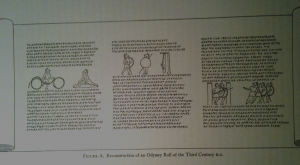
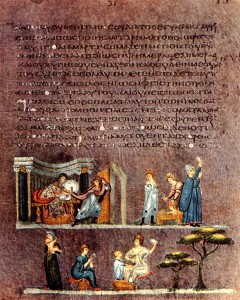
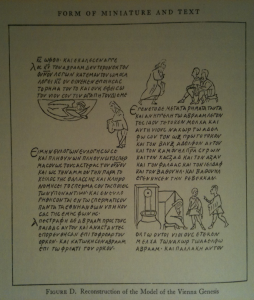

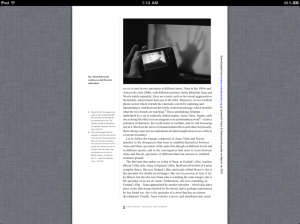
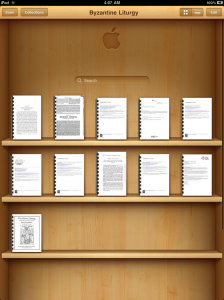
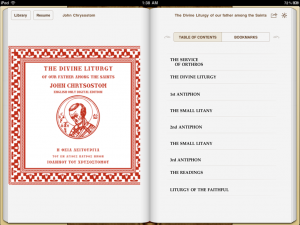

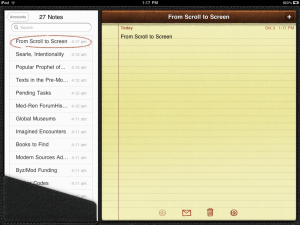



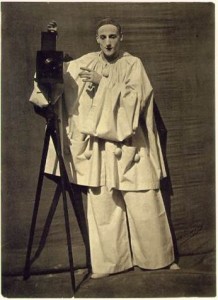



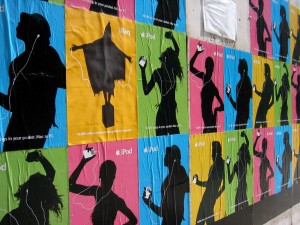

“the horizontality of the reading experience”
It’s a very interesting idea, that horizontality might somehow be inherent in reading. The first thing a Westerner thinks of would be the Chinese — I wonder whether there is any equivalent to the codex in the Chinese tradition? The stories I’ve learned about the development of the Western codex link it to simple economics: the price of Egyptian papyrus went up, so someone enterprising up in Pergamum invented parchment… Not so? If so, that would make the horizontality of Western reading that much less inherent, or inevitable.
You make another interesting point with your “doctrine of incarnation and image-making”. I do not understand, though, if there is a direct relationship between that and horizontality? There, again thinking of the Chinese, there are the wonderful scrolls which literally tell-the-tale, in words and pictures, as they are unrolled from right to left, the images communicating horizontally but in the reverse order of that of the West, and continuously the way a film does, and the text communicating vertically.
Certainly you are correct about “the poly-sensory potentialities of the icon” — Apple would love the phrase! 🙂 “Iconic” is a much used and sometimes-abused notion in their marketing. They explored it well in their wonderful Think Different ad campaign.
The idea of horizontality and its necessity still worries me, though, in what you say here. Please say more? The ebook attempt to replicate the previous technology certainly is mimesis at work again, just as it worked for Gutenberg & Fust for selling their bible. But why horizontal? Other than the price of papyrus in Pergamum…
“the changing epistemic foundations of the image and its resultant ontologies”
— are you saying that the shift, the transition in media from roll to codex, created the icon?